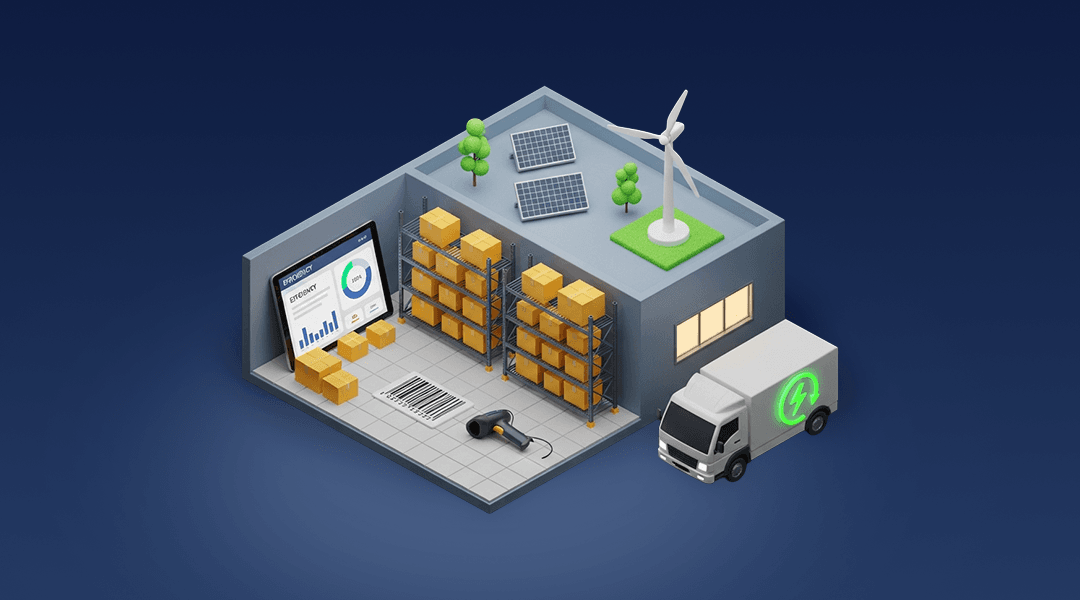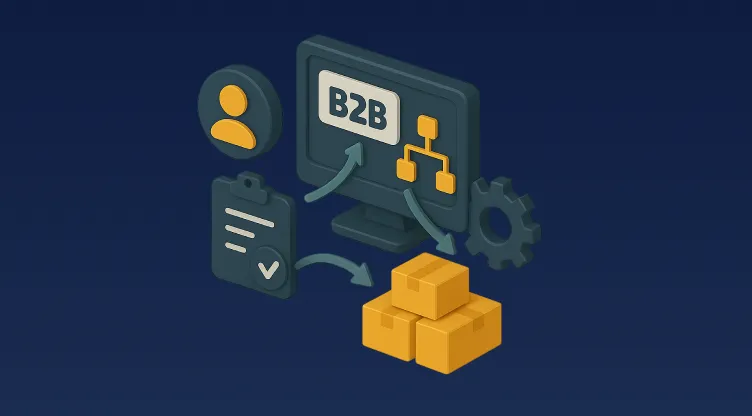Unified Dashboards in Supply Chain: How Visual Data Is Transforming Inventory, Sales, and Logistics

Table of Contents
Quick Glance: What You’ll Gain from a Smart Dashboard
- Real-time visibility into sales performance across all channels.
- Instant insights into top-moving stock keeping units (SKUs).
- Transparency into warehouse operations—receiving, picking, shipping.
- Timely data on return trends and reasons.
- Clear understanding of delivery times and shipping performance.
- A single view of multi-location inventory availability.
Unified Dashboards: Why They Matter More Than Ever in MENA Logistics
In an era where efficiency decides competitiveness, businesses across the MENA region are moving fast to digitise their supply chain operations. But digitisation alone isn’t enough—it’s the clarity of data that unlocks operational excellence.
For retailers, 3PLs, and e-commerce brands from Saudi Arabia to the UAE and Egypt, managing a warehouse or distribution centre without a consolidated view of operations is like flying blind. Whether you're tracking inventory levels, sales per channel, or shipping delays, unified dashboards turn raw data into live, actionable intelligence.
These visual tools centralise multiple datasets—sales, stock movement, order fulfilment, and returns—onto a single screen. With this, teams can respond faster, plan smarter, and optimise resource use without switching between platforms or spreadsheets.
Sales Overview in Real-Time: Stay Ahead of Demand
Tracking how much you're selling—and where—is vital for any business that operates across multiple sales channels. Whether you're listing products on Amazon.sa, Noon, or managing your own online store, unified dashboards give supply chain and sales teams a single window to monitor performance.
With a well-designed dashboard, businesses can:
- Track daily sales by store, channel, or location.
- Identify hourly or daily peaks to optimise inventory allocation.
- Cross-reference promotional campaigns with sales uplift in real-time.
For example, a retailer operating in Riyadh can monitor which SKUs perform best during Eid promotions or White Friday campaigns and adjust procurement immediately, reducing missed opportunities.
SKU-Level Clarity: Make Stock Work Smarter
Your warehouse might hold tens of thousands of items, but only a handful will contribute to most of your revenue. Understanding which SKUs move the most—and which sit untouched—can transform inventory decisions.
By integrating your warehouse inventory management system (WMS) with a dashboard, teams can:
- Instantly view fast-moving SKUs across all fulfilment hubs.
- Monitor ageing inventory to flag slow-moving or obsolete stock.
- Track how promotions impact SKU velocity.
Advanced dashboards also support SKU grouping by attributes such as category, expiry, or supplier, allowing detailed performance insights. For example, a retailer selling seasonal fashion across Dubai and Abu Dhabi can quickly spot overstocked winter lines and plan markdowns ahead of summer.
Shipping & Delivery: Your SLA Report Card in Real Time
Late deliveries erode trust. And in markets like Saudi Arabia, where consumers expect fast, reliable service, tracking your logistics performance is non-negotiable.
Dashboards integrated with your WMS and shipping partners allow for:
- Monitoring actual delivery timelines compared to expected SLAs.
- Analysing courier performance across different cities.
- Spotting patterns in late deliveries or failed attempts.
If your team in Jeddah is consistently seeing delays with a particular courier during high-demand periods, a unified dashboard helps you spot it early and adjust the shipping logic or partner.
Warehouse Flow Visualised: From Gate-In to Dispatch
Without clear insight into warehouse operations, errors and delays can go unnoticed until they affect customer experience. A unified dashboard offers a live overview of:
- Inbound activities: Gate entries, Goods Receipt Notes (GRNs), putaway.
- In-warehouse tasks: Picking, packing, consolidation.
- Outbound events: Dispatch readiness, handover, and courier tracking.
Warehouse managers across the UAE can use real-time dashboards to optimise shift assignments based on peak periods and zone-level performance. For instance, if Zone A consistently completes orders faster than Zone B, team training or layout changes can be initiated immediately.
This visibility also supports automation. When integrated with mobile WMS apps, these dashboards update instantly as teams scan barcodes or complete tasks on the floor—ensuring data accuracy.
Returns Intelligence: Reducing Friction and Revenue Leakage
Returns aren’t just about customer dissatisfaction—they’re about operational gaps. Knowing why items are coming back, and how quickly they’re being processed is critical for MENA retailers handling both online and offline returns.
Dashboards focusing on reverse logistics allow teams to:
- Track volumes of returns by location, SKU, and channel.
- Identify top reasons—defects, wrong item, size mismatch, expired goods.
- Review processing times and stock adjustment delays.
A fragrance brand in Saudi Arabia, for instance, can use this data to spot recurring return issues tied to a particular SKU. If returns spike due to broken packaging, changes can be made to the packing materials or vendor agreements.
Returns dashboards also sync with financial systems to ensure that refunds and credit notes are automatically applied, reducing manual reconciliation.
Examples of Dashboard Widgets That Drive Action
Every powerful dashboard is built with decision-making in mind. Here's what you’ll typically find on best-in-class supply chain dashboards:
Daily Sales Tracker
- Real-time sales performance.
- Drill-down filters by product, region, or channel.
- Visual trend comparisons week-over-week.
SKU Snapshot
- Inventory on-hand vs reserved vs incoming.
- Flags for low stock or excess inventory.
- SKU ageing and batch expiry alerts.
Delivery Overview
- Order-to-delivery average times.
- SLA adherence scores by courier.
- Delivery exception heatmaps by zone.
Return Insights
- Reasons and volumes of returned items.
- Financial impact (refund value).
- Processing duration from pickup to re-stock.
Warehouse Task Monitor
- Pick rates per team or shift.
- Real-time movement of items by bin or zone.
- QC pass/fail rate and average processing time.
All of these are powered through integrations with WMS, OMS, and TMS systems, ensuring that data isn't delayed, duplicated, or siloed.
MENA-Specific Dashboard Considerations
For businesses operating across the Middle East and North Africa, the following adaptations improve dashboard relevance and effectiveness:
- Support for Hijri and Gregorian calendars for better forecasting around cultural events.
- Right-to-left interface support for Arabic-speaking users in operations.
- Multi-location hub visibility, especially for 3PLs managing dark stores in Saudi Arabia or fulfilment centres in the UAE.
- Custom SLAs per city or region, as delivery expectations vary between urban and rural locations.
How Unified Dashboards Empower Business Strategy
Operational insights aren’t just for frontline teams. Unified dashboards are increasingly becoming strategic tools for leadership. With a few clicks, C-level executives can:
- Review real-time gross margin impact from returns.
- Analyse warehouse throughput and cost-per-order.
- Benchmark courier performance to inform renegotiations.
- Monitor demand surges to guide marketing campaigns.
By shifting from static reports to live dashboards, MENA businesses get a digital nerve centre that empowers every department—from warehouse to the boardroom.
Ready to Gain Real-Time Control?
If you're struggling with delayed reports, fragmented tools, or reactive operations, a unified dashboard can change everything. With the right system, data becomes not just available—but usable.
Omniful’s modular WMS, OMS, and Supply Chain systems are designed with dashboard-first logic, empowering businesses across the MENA region to make better decisions, faster.
See Omniful in Action and explore how custom dashboards can bring clarity and speed to your logistics operations.
Common Questions Answered
Can dashboards work across multiple warehouses and brands?
Yes. A unified system like Omniful supports multi-brand and multi-location operations, giving visibility across all nodes of your supply chain.
How real-time are the updates?
With the right WMS integration, updates are instantaneous—based on barcode scans, order creation, and inventory adjustments.
What kind of data can I see about SKUs?
You can track movement, expiry, stock levels, ageing, returns, and even batch details—making SKU planning and forecasting more accurate.
How do dashboards help in reducing returns?
By analysing return reasons, failed deliveries, or quality issues, you can take action on the root cause, improving customer satisfaction and reducing costs.
Is the dashboard suitable for Arabic users?
Yes. Systems like Omniful offer RTL support and Arabic localisation to ensure a seamless experience for regional teams.























